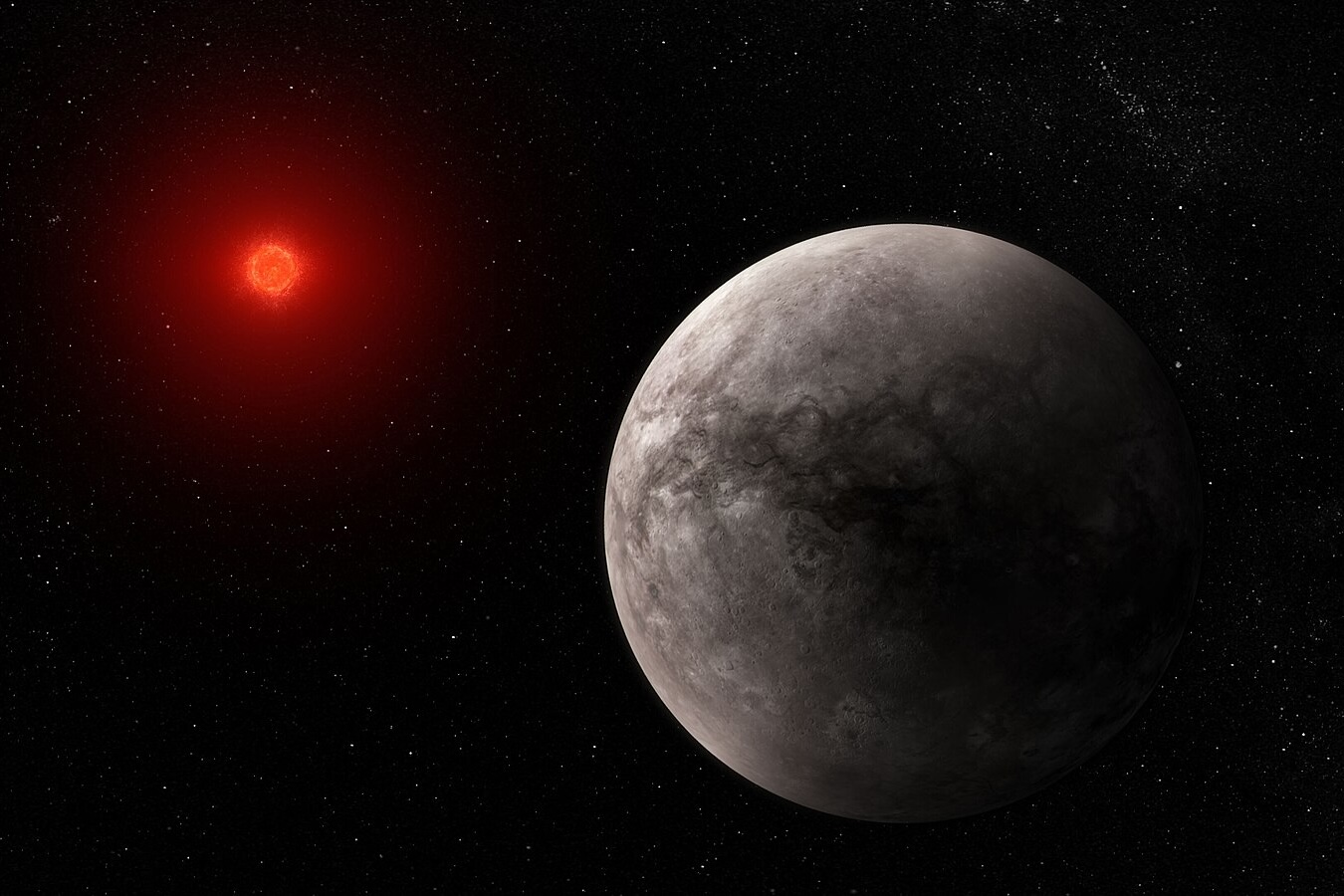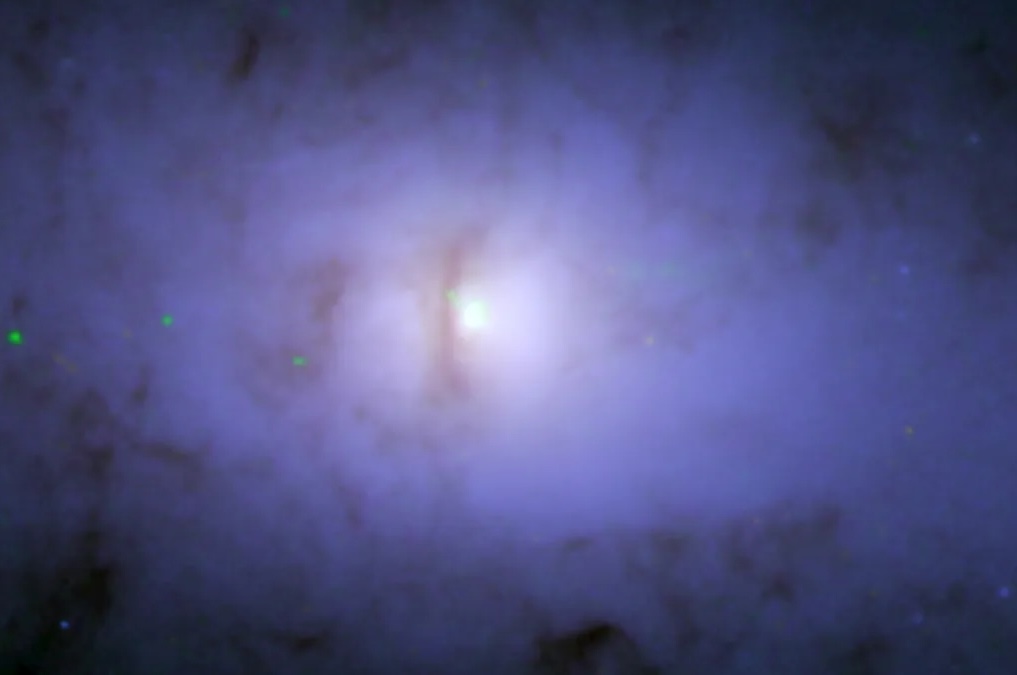In the journals JGR: Planets and JGR: Machine Learning and Computation, BAERI Research Scientist Ariel…
Learning from the Dust: Courtney Batterson and Martian Research
By Jane Berg
When BAERI’s Courtney Batterson was a child growing up in Minnesota, she was fascinated by storms — not only the tornados for which the Midwest is known — but also the very sudden and aggressive thunderstorms that felt like they came out of nowhere. “I would wonder where they came from and where they were going,” she says. Batterson always knew she wanted to study storms but never expected they would be on a different planet altogether: Mars.

Courtney Batterson, assistant research scientist at the Mars Climate Modeling Center. Image: NASA.
Batterson is an assistant research scientist at the Mars Climate Modeling Center (MCMC), a research group housed at NASA’s Ames Research Center, where scientists investigate the current and past climate of Mars. They do this using the Mars Global Climate Model, a weather forecast model that synthesizes data gathered from Mars missions and satellite observations in order to help scientists better understand the Red Planet’s weather patterns. The research is wide ranging and varies from studying the mass of the planet’s atmosphere to the water ice of its North Pole and even the history of climate change on Mars.
Batterson has been researching dust storms, particularly a seasonal dust storm in the planet’s southern hemisphere that we know relatively little about, called the “B” regional dust storm. She was intrigued by the gap in the literature about the “B” storm, which led to some interesting questions, such as: “Why isn’t there a northern hemisphere response? How is there dust that high? What’s pushing it up? How does it even become a storm?”
We’re sitting in The SpaceBar, a quiet pub in the shadow of the colossal steel structure of Hangar One at Moffett Field, where scientists can get a quick burrito or a cheap beer. The decor is somewhat retro: a neglected Street Fighter II game loiters in the corner.
Moffett Field, in the Bay Area, is a long way from Minnesota and Omaha, Nebraska, where Batterson studied meteorology. She first came to California for an internship at the MCMC and six years later is still the youngest member of the team. She seems a little nervous about a big presentation she has to give to some higher-ups at Ames tomorrow, but when speaking about her research, her voice is quick and self-assured.

Batterson and other MCMC research scientists at NASA Ames. Image: Courtney Batterson/NASA Ames.
“The dust on Mars is so interesting because it’s the first thing heated when the sun hits it,” Batterson says. This dust then heats carbon dioxide, which makes up most of the atmosphere on Mars, so this causes the planet to get warmer. “The dust is really what’s heating the atmosphere, rather than direct sunlight warming the gaseous CO2,” says Batterson.
The research being done by the MCMC has played an important role in entry, descent, and landing support for Mars rover missions, and the researchers hope that the rover will give them more observational data to inform their model. In addition to the rover data, Batterson would like to see a network of satellites making observations over the planet’s entire surface, especially of the poles, which we still know very little about. But while those data would certainly be enlightening, it all comes with a price tag. Mars missions are some of the most expensive of all NASA’s initiatives. The most recent, the Perseverance rover, will cost an anticipated $2.7 billion.
“For people who aren’t planetary scientists, what’s the benefit?” I ask. Batterson responds: “I would say the biggest thing is that Mars is one example of how our planet could end up, and it’s a way we don’t want to end up.” She explains that the leading theory is that Mars used to be a planet that was “warm and wet.” There’s evidence it had vast rivers, if not oceans, and possibly ancient life forms. But for Mars to have been warm and wet, it would have needed more atmosphere, some ozone, and a magnetic field. In that case, it would have looked a lot like Earth.
“But something happened,” says Batterson. “And whatever triggered the chain of reactions that caused the runaway greenhouse effect on Mars, caused it to become cold, dry, barren, and dead. And that’s one possibility for Earth’s future.…So if we can understand how [Mars] got there, maybe we can prevent it from happening to us.”
Would she ever consider traveling to Mars one day? Knowing what she knows now, Batterson says there’s “no way.…It would be great if I could just snap my fingers and go for a second. But for me, it’s not worth the trip.”
She’s more excited about the possibility of rock samples from Mars being brought to Earth. So far, Perseverance has deposited geotagged samples on Mars’s surface, ready to be picked up by a future mission.
Studying the geology of these rocks will “inform the models like crazy,” because scientists will know more about the size and density of the dust grains on Mars, which could change our understanding of “how water and CO2 condense on those dust particles to form ice that either stays aloft as clouds or falls out of the sky like snow.”
But, as it will likely be the early to mid-2030s before these samples can be brought to Earth, Batterson and her colleagues will have to keep trying to improve their models with the data they have now.

The MCMC team in the 40 x 80 ft. wind tunnel (National Full-Scale Aerodynamics Complex) at NASA Ames Research Center. Image: NASA/BAERI.



